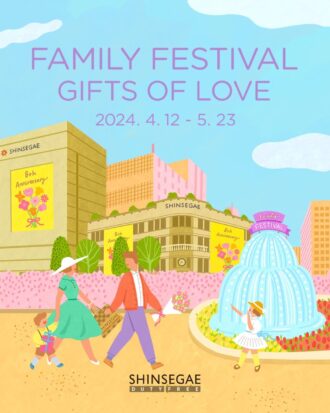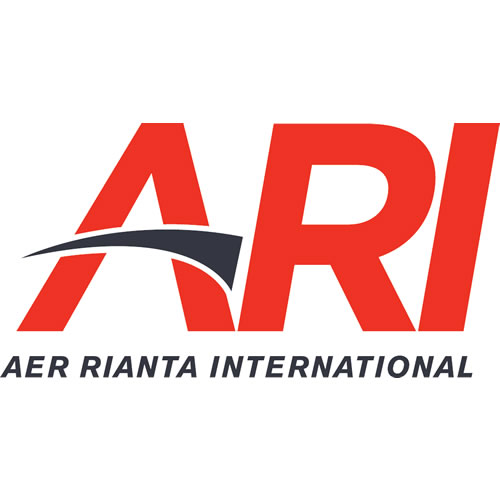 Aer Rianta International (ARI) has long championed the concept of Sense of Place and has partnered with The Moodie Davit Report for our successful column dedicated to the subject. These articles were first published in The Moodie Davitt e-Zine.
Aer Rianta International (ARI) has long championed the concept of Sense of Place and has partnered with The Moodie Davit Report for our successful column dedicated to the subject. These articles were first published in The Moodie Davitt e-Zine.
INTERNATIONAL. Major renovations at Casablanca Mohammed V International and Marrakesh Menara have given Dufry the opportunity to introduce walkthrough stores in Morocco’s two busiest airports.
For these stores, the retailer partnered with The Design Solution to enhance the local feel in-store. Dufry Chief Executive Officer of Southern Europe & Africa Pedro Castro has praised the “great job” done by the design company on the store design.
The Design Solution Director Nick Taylor says the company was looking to “blend ancient and modern to reflect the rich heritage and modern vibrancy of Marrakesh” for the walkthrough store at this airport.
“The design adopts classic themes from Marrakech’s rich cultural heritage – including the mesmerising arabesque patterns, a rich colour palette, beautiful woodwork, its natural beauty and the amazing intricacy of the country’s tile mosaics,” he explains. “All of which is beautifully balanced by the equally traditional use of simple shades of white.”
Taylor says that the warm gold, red and black colours used in contrast to the white backdrops of the stores are a reflection of both Morocco and Dufry’s branding.
“This can be seen, for example, within the main duty free store in two specialist concepts that we developed for Dufry and have used at a select number of airport locations across the world. Suncatcher offers premium eyewear in an engaging and cohesive contemporary setting, including the use of classic Moroccan tiling patterns, while Timebox, adopting a complementary clean and modern style, specialises in watches,” he adds.


Marrakesh Airport provided particular challenges from a design perspective, Taylor says, because of what he terms “exceptional passenger circulation issues”. He continues: “In response, the design incorporates an ‘infinity loop’ traffic circulation that will encourage passenger flows around both the centrally positioned seating and beauty islands and back towards the speciality retail and restaurants.”
Taylor concludes: “The new spaces at Marrakesh demonstrate just how effective design can be in sharing combined expressions of heritage and modernity, creating an exciting story to share with the traveller and leaving them with wonderful departing memories of Marrakesh.”
Larnaca Airport banks on beauty
Creating ‘a true Cypriot Sense of Place’ has been an important aim for Cyprus Airports Duty Free (an Aer Rianta International company) during a major retail refurbishment now underway at Larnaca International Airport. The project covers 4,300sq m in total.
Undertaking the design work at the fast-growing gateway – whose traffic topped 8 million in 2018 – is Dubai-based ODG. As well as establishing a Cypriot feel, the design philosophy is to ensure that each retail category has its own clear identity.
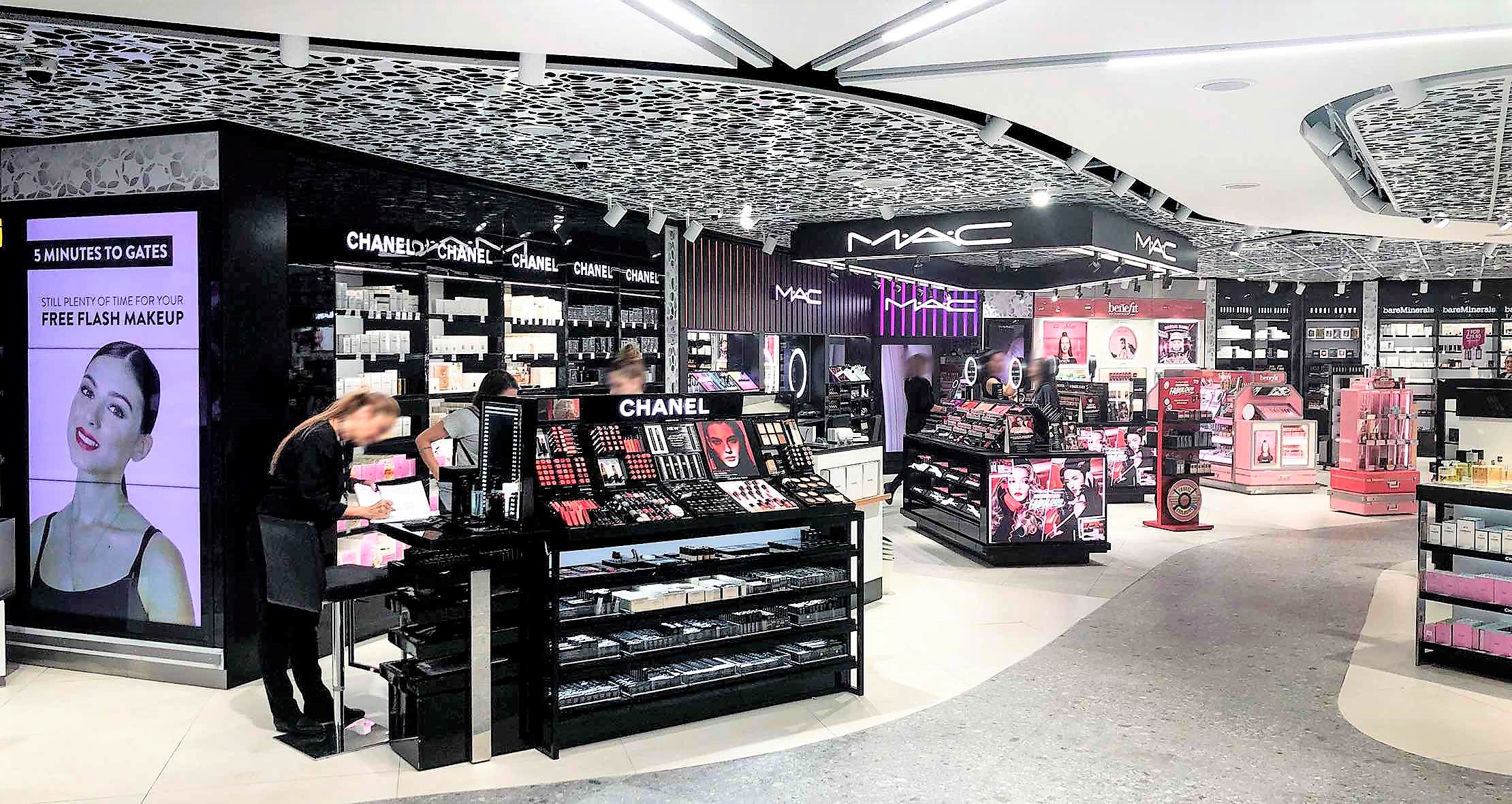
The first phase – covering the beauty area – has just been completed and has been designed as a walk-through. One striking feature is the ceiling. “It is inspired by the way light filters through the branches of olive trees to create a dappled canopy,” ODG says. This has the added benefit of creating a ‘sense of volume’ (as well as place) in what is a low-ceiling part of the terminal.
Speaking to The Moodie Davitt Report about the project, ARI’s Global Head of Beauty Deirdre Devaney says: “We have drawn from local culture, colours, nature and materials to create an international showcase environment with a local Sense of Place.
“Grey stone has been used in our main and secondary walkways reminiscent of cobbled paving at a typical village, while the retail areas have been finished in a light cream stone porcelain. Local Lefkara lace is represented in the fretwork patterns of our metal ceiling panels above the retail areas, while the walkways are defined by means of a solid gypsum surface.
“Cypriot stone mosaic similar to that seen in many historical sites has been used on the front-facing panels of our cash desks. Finally, vibrant colours that represent the turquoise waters, green fields and multi-coloured flora shall be used in our marketing material and graphics.”
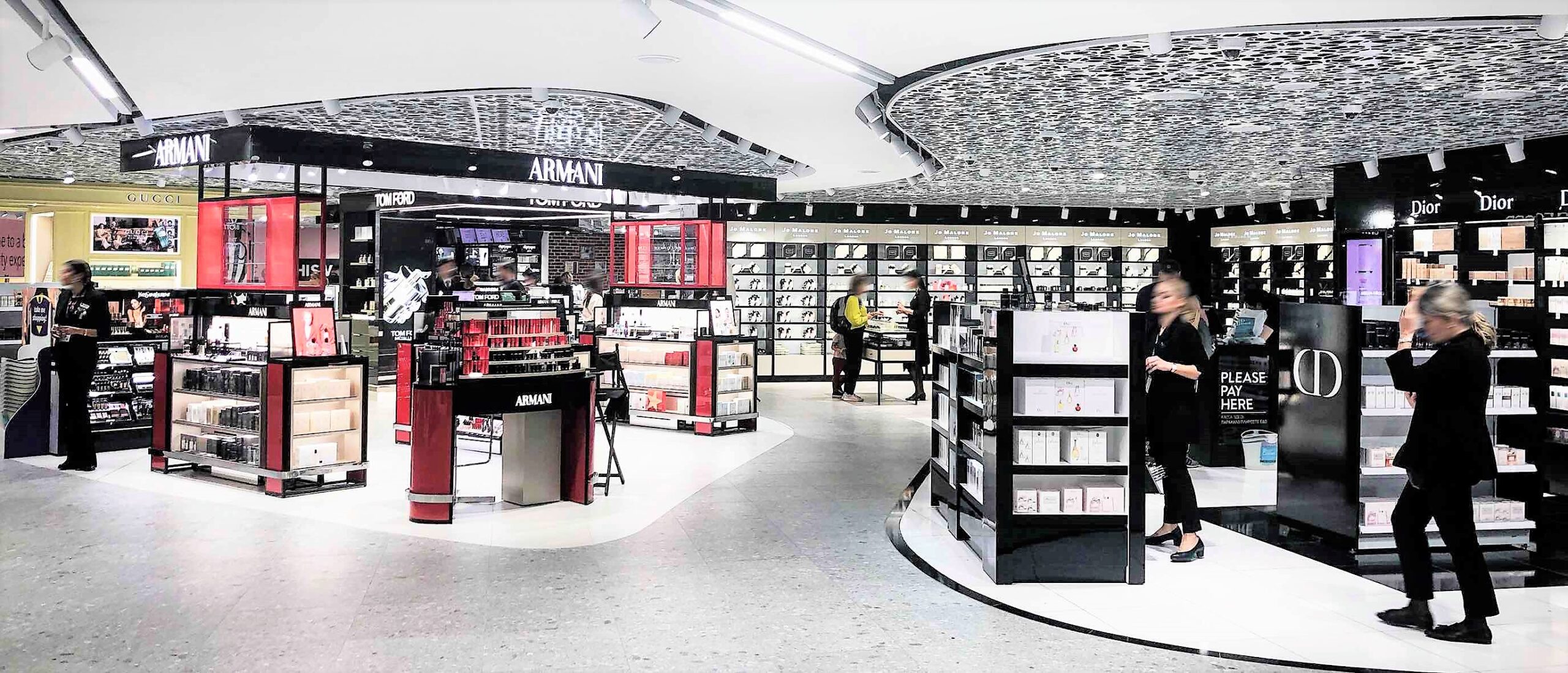
The level of detail that Devaney describes is an indicator of just how important a local look is to ARI, and not just in Cyprus. The reasoning is straightforward. “In my view it is imperative, as retailers, that we create a uniqueness in each of our locations by introducing distinctive features drawn from local influences that are not offered anywhere else,” Devaney explains.
“The aim is to create a one-of-a-kind environment where customers can feel a connection to the location and will ultimately have a positive effect on consumer behaviours.”
This also goes beyond the design and presentation elements of the stores. In the case of beauty, many Cypriot and regional brands have been added to the regular ranges. Across toiletries, brands from Cyprus include: Bath of Aphrodite, the skincare house which offers three main ranges at the airport – Olive Oil, Donkey Milk, and Argan Oil; and De Costa bath line products. Greek skincare brands include: Olive Era – made from olive oil; Korres – whose ingredients are all cultivated in Greece and which also offers haircare; and Apivita – a haircare brand with natural ingredients.
Even more in-depth Sense of Place zones are coming to Larnaca Airport following Phase 1’s completion. ODG Managing Partner Hugo Vanderschaegh tells The Moodie Davitt Report: “The first phase is perhaps where Sense of Place is more discreet, with the majority of space being branded by the various beauty houses. However, a very strong Sense of Place has been designed in the upcoming liquor, tobacco, souvenir, gourmet areas – complete with some spectacular structures. We look forward to opening those phases, which promise to be even more spectacular.”
A natural focus
The design behind the transformed retail experience at Perth International Airport offers a subtle celebration of the natural beauty of Western Australia and the vibrancy of the ocean city.
Designed by London-based travel retail design specialists The Design Solution, in partnership with Dufry and Perth Airport Pty Ltd, the dynamic new departures retail space of 1,200sq m is part of a +50% expansion of retail floorspace at the airport.
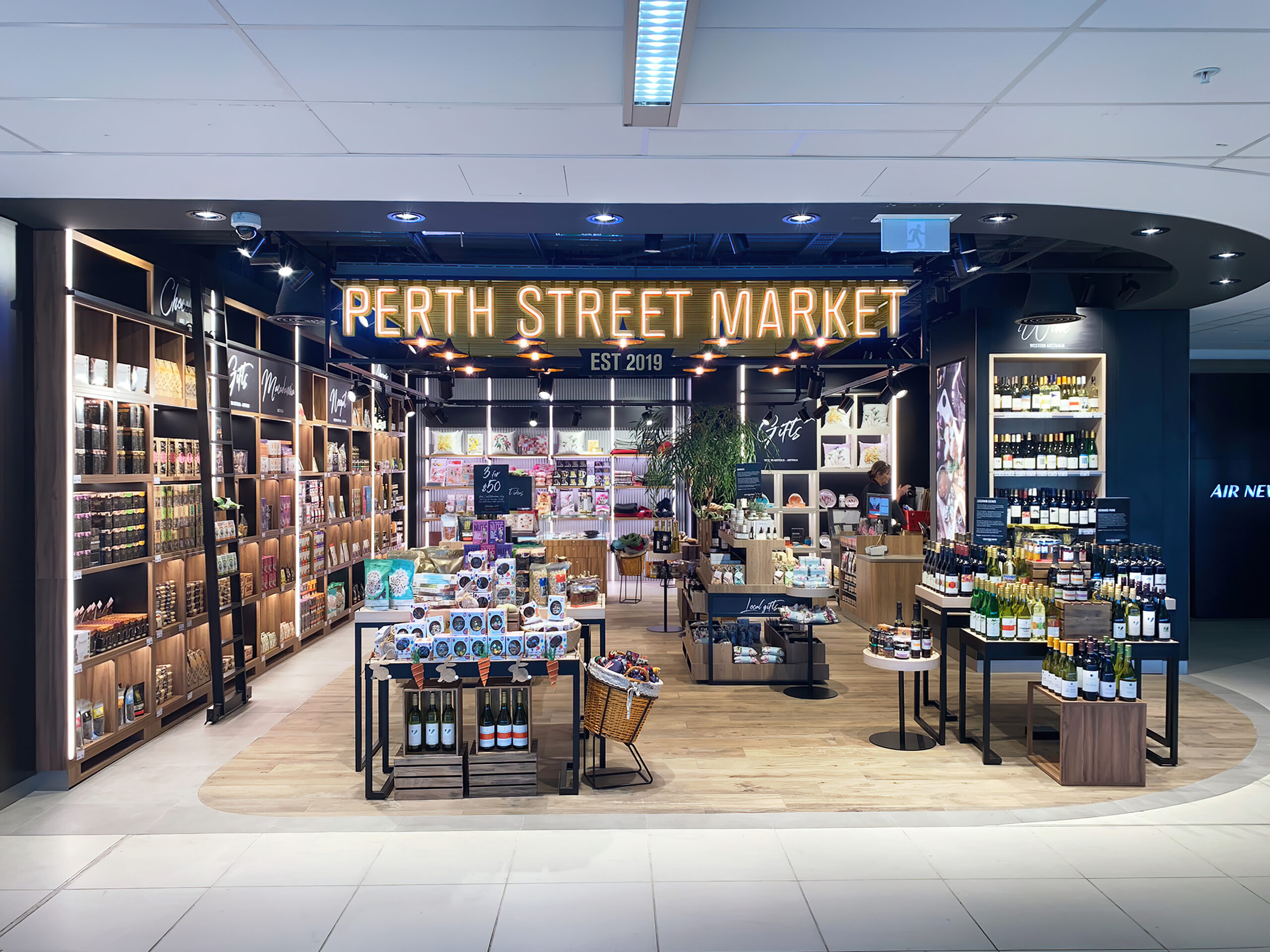
The design aims to resonate with natural and cultural elements of Australia, providing a deep expression of location at the airport.
The store design concept integrates that local focus across the retail experience, according to The Design Solution. This is most noticeable through the installation of a series of large-scale representations of Western Australia’s iconic boab tree, a favourite sight for tourists to the region, to highlight feature areas within the store. The ‘canopy’ of each tree helps designate the promotional space below it.
The strongest expression of ‘local’ is transmitted in the Perth Street Market area, a new local products concept specifically developed by Dufry for Perth Airport. The market celebrates local produce and goods such as wines, confectionery, gifts, skincare, homeware and a wide selection of foods.
Among other store highlights, Dufry’s specialist concept for sunglasses, watches & jewellery – The Collection store – incorporates the boab tree form as the central feature of the store. This is complemented by digital screens and product displays within the unit while the store adopts the colour tones of the coast’s sunsets, including ocean-style reflections used in silver tones against reflective golden surfaces.
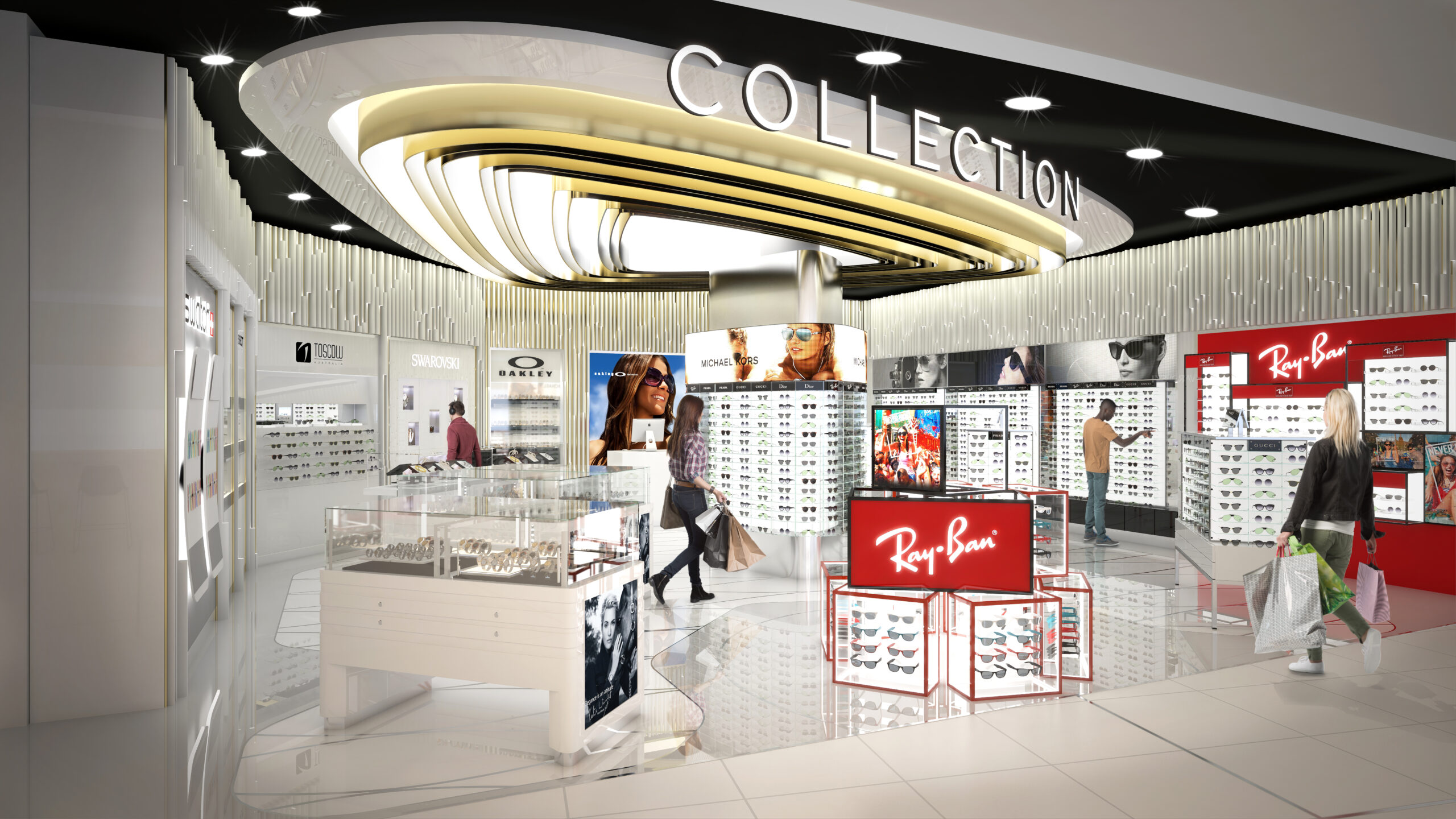
In perfumes & cosmetics, the shimmering coastal waters are echoed in the colour tones and textures while local liquor & food adopts the state’s rich, rustic landscape limestone formations to the region’s 24 national parks.
As part of a digital focus across the store, a series of ‘digital echoes’ are integrated into the boab trees, strategically placed in promotional areas to provide marketing messaging such as the latest seasonal event campaign, new product launches and store branding.
“The local spirit is shared comprehensively across the holistic space, complemented by Dufry’s commitment to creating a unique identity for the retail experience at Perth and sharing an outstanding retail experience for the shopper,” says The Design Solution Director Nick Taylor.
“We’re delighted with our design work at Perth Airport, particularly in the local expression of what we call ‘placemaking’ rather than the perhaps overused term ‘Sense of Place’.
“It’s crucial that airport retail design presents a deeper expression of what is now commonly referred to as ‘Sense of Place’. It’s great that the industry is developing a stronger awareness of the need – and the shoppers’ demands – for a stronger and unique local expression in the design of the retail experience but I think the scale and depth of the process is still hugely misunderstood within the industry.
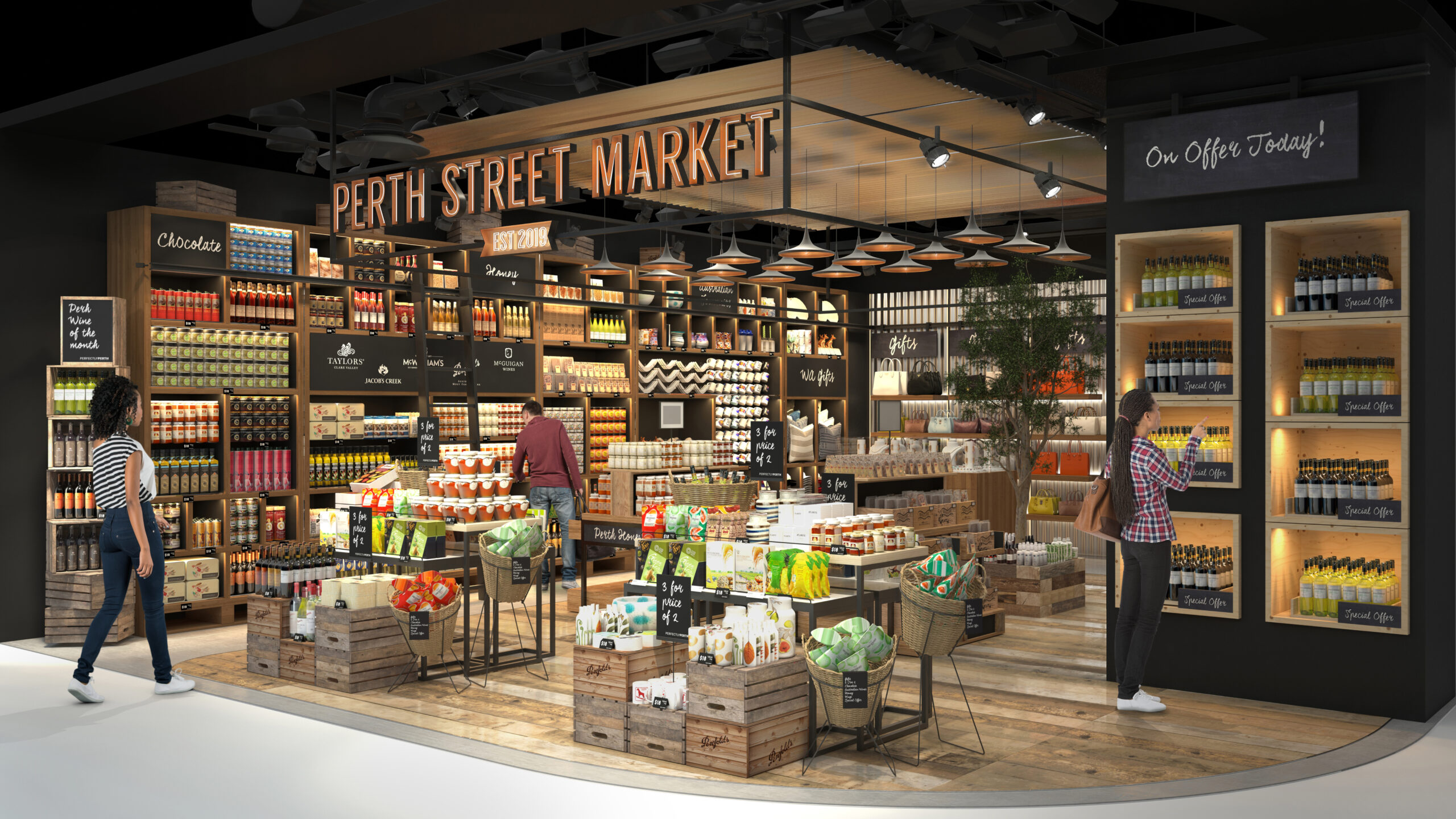
“In particular, there is sometimes a misconception in travel retail that ‘Sense of Place’ is dominant over the overall design concept when, in fact, it is actually simply a component of the concept, albeit an important one. So, whether we are assessing a shop or an airport, my view is that we are aiming to create a contemporary, unique interior design with an element or vein of locally-inspired design references.
“In a shop, these local references are carefully married with the product being sold, so you are at the same time enhancing the whole ‘feel the category’ mood of the space to engage the shopper. Here at Perth, for example, we’ve achieved that across the whole space but it’s especially apparent in the Perth Street Market area, sharing an authentic and credible local expression – without a clichéd kangaroo or boomerang in sight.
“This approach goes well beyond the simplistic outcomes still seen at some airports whereby a supposed ‘Sense of Place’ is actually just a designated space with a basic display of local products and has no design cohesion with the holistic retail space.
“From a design perspective, the measure of success comes from the local reference points being clear enough that the traveller immediately understands and enjoys them but they then also discover something beyond that immediate familiarity. We’re always aiming to surprise them in sharing a unique sense of local character and identity.
“At The Design Solution we’re seeing airports of all sizes who understand their unique potential to express a sense of their location, not only further differentiating their airport but also driving significant performance potential.”
“Senses” of Place
Definitions and executions of Sense of Place vary greatly – with mixed results and success. Here, Marek Kolasinski of consultancy The Blueprint Partnership offers a more focused overview of the opportunities it presents and why the concept should be considered as an investment rather than a cost.
As you walk into the terminal, you are greeted by an extraordinary display of light and decorations that take your breath away. A soft piece of music suffuses the air, seemingly coming from everywhere at once, yet you cannot identify exactly where from. The smell of summer greets you and takes your mind back to the beach where you’ve just spent two wonderful weeks. You close your eyes for a minute, savouring the memory before reopening them to the harmony of light, sights, smells and sounds that surround you and you feel welcome, almost as if you’ve just got home.
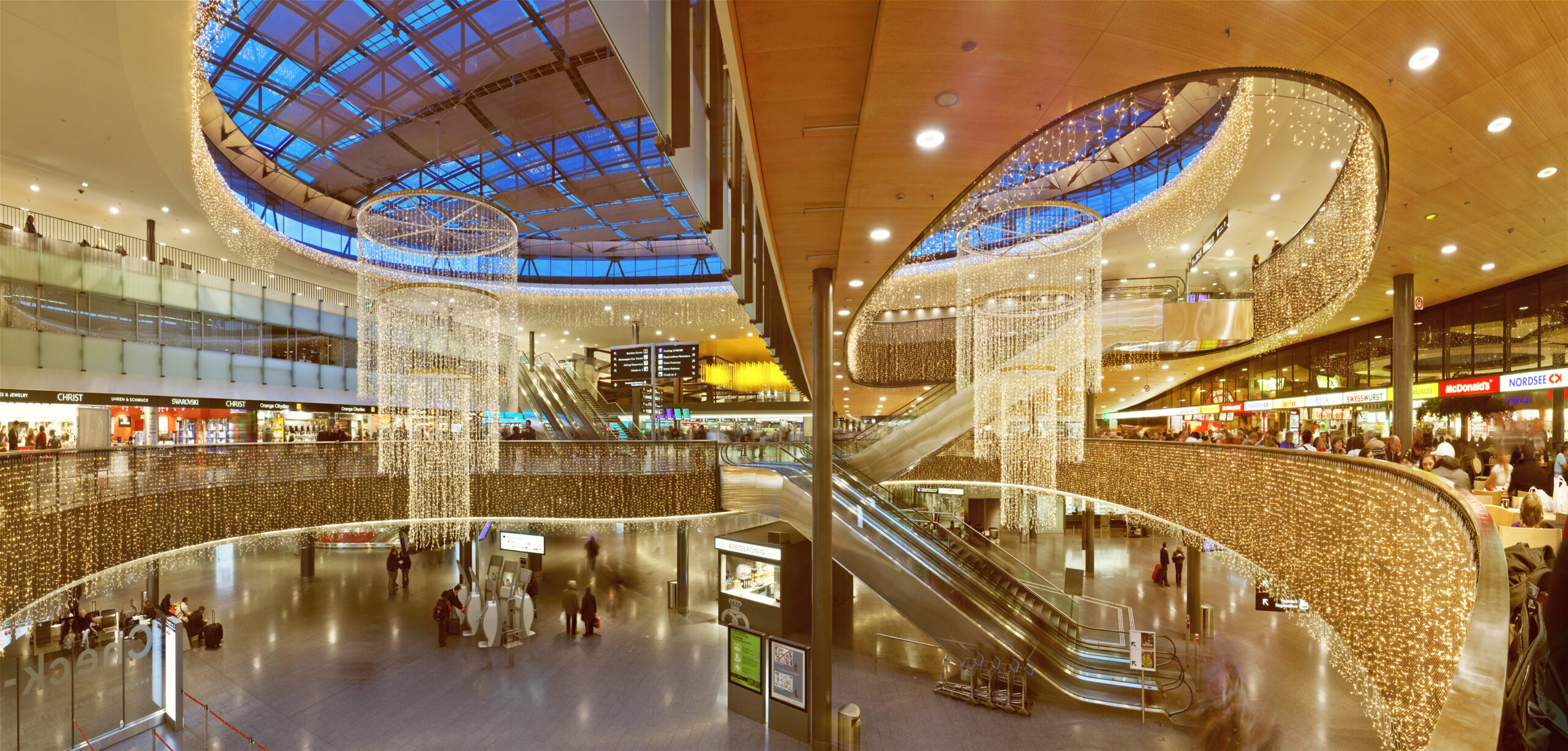
Is it too much to imagine that going through an airport could be a pleasant and relaxing experience where going from kerbside to the plane is one seamless journey filled with a sense of peace and anticipation for the trip ahead? Are we so far away from the description above, where travellers arriving at or leaving an airport do so happily? So happily, in fact, that they decide to arrive at the airport earlier just to spend more time in an environment they find welcoming, comfortable and safe and in which they want to spend time – and money – because the experience is worth it.
This is the holy grail of the duty free and travel retail industry: to bring together the right set of elements to bestow upon travellers that all-important level of satisfaction that will make them feel happier and partake in more of what the airport has to offer.
In order to do so, airports are investing heavily in the traveller experience and in what they define as a ‘Sense of Place’. From Changi to Dallas Forth Worth, the buzzword has taken the industry by storm and, it would seem, is going to revolutionise travel retail like never before.
Only, Sense of Place is not a new concept and airports have been implementing it for several years – some more successfully than others – without a clear definition of what Sense of Place actually means.

“The concept of Sense of Place is sometimes confused, with the outcome being the installation of garish symbols of the locale that the airport operator believes to be expected by the passenger, rather than an overall defining design element and experience,” says Glyn Williams, former General Manager, Retail at Sydney Airport, who was recently appointed Senior Vice President, Asia Pacific at Harding Retail.
In fact, Williams finds the term Sense of Place too limiting and speaks instead of Senses of Place. He cites the work carried out at Sydney Airport where, “rather than replicating iconic tourist locations, the decision was made to focus on what Sydney is known for: sun, water and colour”.
This was achieved in different stages; from the installation of bay windows that bathed the terminal in light while offering unrivalled views over the bay and city skyline, to the selection of local café brands, and the choice of a palette of colours and materials that would be reminiscent of Sydney. The overall effect created “a streetscape that flowed and was connected”, enthuses Williams, “making travellers feel as if they were still within the city they live in or had come to visit.”
Sydney Airport is but one example where the careful study of what really created a Sense of Place has resulted in a boost in traveller satisfaction and, by correlation, in commercial revenues. Other examples abound. Williams points to Zurich, Oslo and Copenhagen airports as all having “beautiful design and amazing retail” while providing “an incredible amount of passenger comfort”. “The key thing is that they understand what they want to be; they have a clearly defined and well executed strategy,” he says.
This is the crux of the matter: Sense of Place cannot be a gimmick. Travellers are too clever and experienced today to be fooled by some plasterboard construction that is more reminiscent of a fairground than an international airport. Sense of Place needs to be firmly and seamlessly incorporated within an airport’s development strategy, one that has a clear mission statement and vision and puts the travellers and their needs firmly at the centre of everything they do.
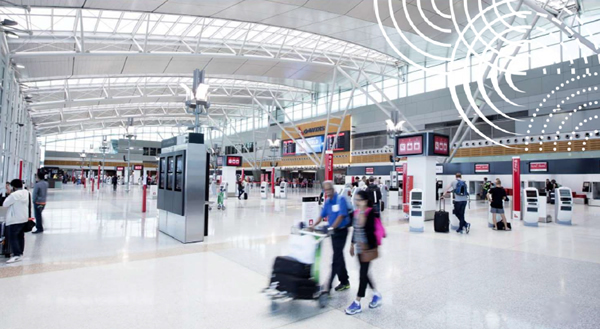
Long gone are the days where all that was needed was to arrange the safe transit of travellers from check-in counters to boarding gates with a few commercial and food & beverage elements thrown in along the way to boost non-aeronautical revenues. Looking at global statistics, even though passenger numbers are growing year-on-year, average spend per passenger itself is in decline. And this despite airports becoming more efficient in processing travellers.
“Most travellers understand very well what Sense of Place means, and while talking to them as part of our research, they very often mention that this element is often missing at many airports,” says Peter Mohn, owner and founder of research agency m1nd-set [pictured left].
“Sense of Place is definitely becoming more important, especially since many travellers mention the fact that shops look very alike around the world, and they would expect airports (and the shops) to be more creative in implementing a stronger differentiation from other airports and the domestic high street channel.”
But the current concession model does not leave much room for manoeuvre for retailers and brands. High leasing fees and minimum guarantees have a tremendous impact on a retailer’s margins, and they often cannot afford to invest heavily into the stores and displays. In order to meet their obligations, these retailers turn to the brands, asking them for more margin in order to – just – pay the rent and staff. The end result is a world where retailers use similar designs in all their operations to minimise design and building costs, while only those brands who can afford to not make any money in the channel – writing it off as a marketing cost – are present.
In other words: the same brands presented in the same way no matter where you are in the world.
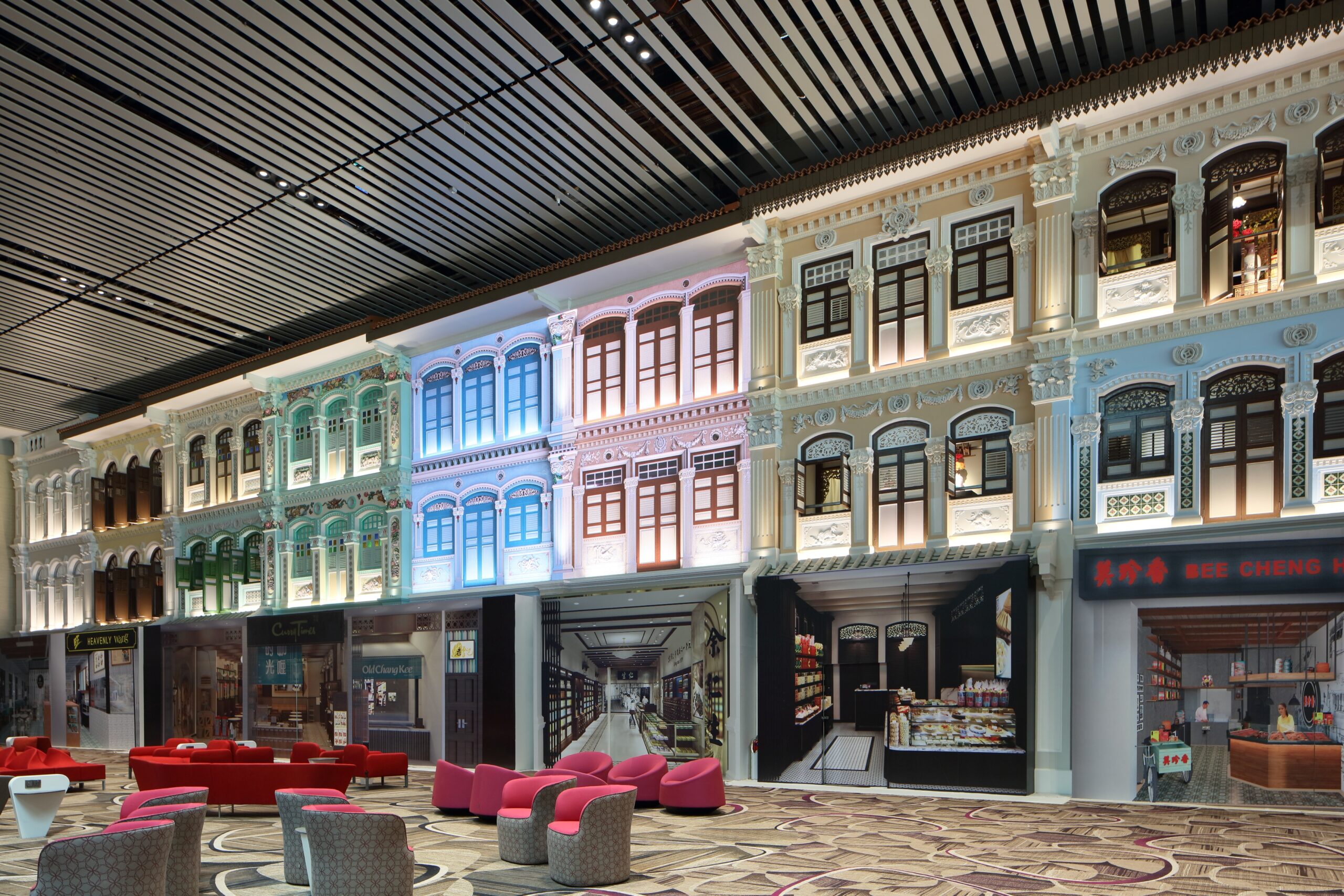
But things are changing, albeit at a glacially slow pace. At The Blueprint Partnership, we have noticed a willingness among retailers to get out of their comfort zone and take more risks with lesser-known brands to differentiate their offering to travellers.
With declining spend per passenger figures, retailers and airports alike are more open to innovative ideas, new brands and an element of differentiation that fits perfectly within their Sense of Place strategy.
Blueprint specialises in developing synergies between their business partners, airports and retailers – all to the benefit of travellers who will be presented with new experiences and a differentiated offer more targeted to their wishes, impulses and, of course, to a better defined Sense of Place.
Travellers are, by definition, in a different state of mind when they travel and we owe it to them to create a truly unique and engaging set of experiences. These can be implemented in many different ways, from design and a tailored commercial offer with relevant locally sourced products, to specific food experiences that are reminiscent of the local cuisine. And from atmosphere lighting solutions that boost travellers’ satisfaction and happiness, to festive events and campaigns inspired by local customs. The possibilities are virtually endless.
For instance, working with MK Illumination – a global leader in atmosphere lighting solutions at airports – Blueprint is helping airports around the world create environments that are tailored to the travellers’ needs. These range from decompression zones to festive lighting; and from impacting on passenger flows to creating foci to draw the attention of passengers to less frequented areas in a terminal.
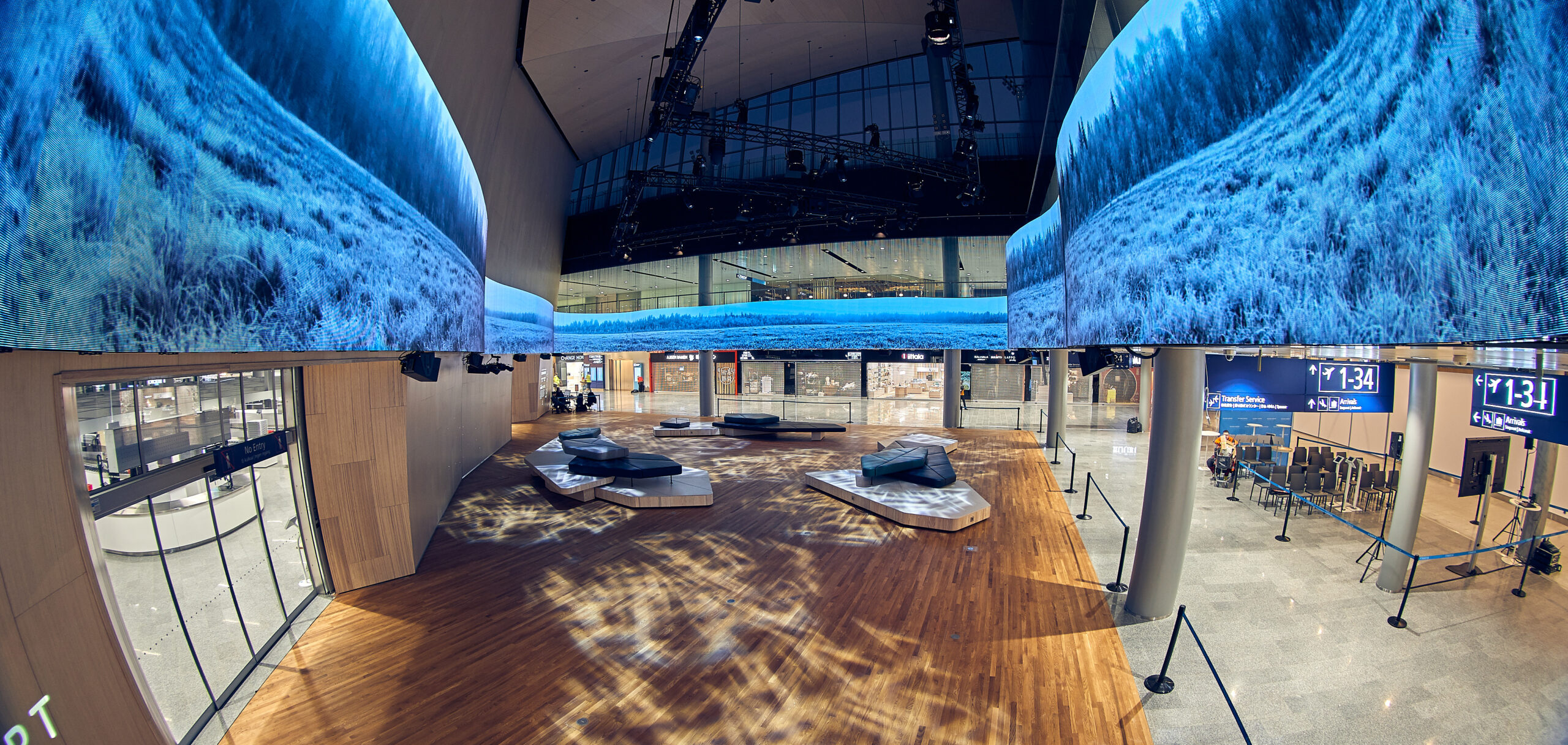
For Blueprint, Sense of Place needs to appeal to all of a traveller’s five senses. We do it through light, music, food and by sourcing brands we feel are currently missing in a retailer’s portfolio, which present a specific appeal to travellers. And we do it by bringing our partners together to create synergies that will benefit all stakeholders in the channel.
One such example of synergy was bringing together sound branding agency Little Giant and audio equipment manufacturer Cornered Audio to deliver a unique sound experience within airports. Little Giant creates and composes music and tunes that are tailored to a company and epitomises its DNA, which the agency has done for a number of corporate giants such as Novo Nordisk, H&M and Danske Bank. Cornered Audio, on the other hand, has developed a range of speakers that fit in – and take full advantage of – corners to deliver perfect, modular and customisable sound to small and large spaces alike. The speakers remain out of sight and therefore have minimal impact on a space’s design and architecture.
Airports and retailers are, rightly, worried about controlling their costs. Sense of Place – and everything it entails – should be seen as more of an investment in creating that perfect environment where travellers can come to relax and unwind before taking their flight.
“We should never lose sight of the fact that a relaxed and engaged passenger can lead to greater sales,” says Williams. “Consider your own experiences of when you are relaxed, say on holidays, and in an attractive retail environment; isn’t it always easier to justify that you need to reward yourself?”
And if personal experience is not a strong enough element of proof, Mohn confirms that traveller research shows that Sense of Place does matter. “M1nd-set data clearly shows a correlation between shops offering a good Sense of Place and the overall satisfaction and happiness with an airport and their shops,” he concludes. “The actual spend is mostly influenced by other factors, such as perceived value for money, but we have seen that there is a connection between a positively perceived Sense of Place and shopper spend.”










